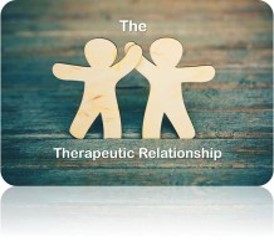In my travels each year, I meet 1,000’s of clinicians–professionals who truly want to help others, and are willing to try almost anything to do so.
That’s why I always “lean in” whenever one expresses concern about the rising popularity of using formal measures of progress and the therapeutic relationship to inform and improve the quality and effectiveness of behavioral health services.
The clinicians I meet are usually aware of the research behind the call to incorporate client feedback into care: (1) many people who begin in treatment (~50 to 65%), leave without experiencing a measured improvement in their functioning or well being; and (2) randomized controlled trials show that doing so improves outcomes and reduces costs (1, 2).
Still, they wonder, “What do clients think?” “Do they consider filling out the forms helpful, or a burden?”
Those asking the question have a point. After all, the measures must be used every session with every client, despite studies to date showing the effects of asking for feedback are largely confined to those not making progress. Said another way, many asked to complete measures (between 35-50%), will experience no benefit from participating in the process.
When answering this question, I’ve always relied on what I’ve been able to glean from available studies (1, 2) and my personal experience. “Rarely do my client’s object,” I say, adding, “Neither have other clinicians reported that their clients consider it a burden.” And the research to date, although sparse, largely confirms that experience.
Overall, clients report that using measures is both positive and beneficial, enabling them to: (1) play an active in the care they receive; (2) maintain a focus on what matters most to them; and (3) collaborate more effectively with their treatment provider.
That said, problems have been noted. Chief among these are therapists failing to explain the nature and purpose of the scales (e.g., validity, confidentiality of the data, rationale) as well as not using the resulting feedback to guide service delivery (e.g., increase responsiveness to individual client needs, goals, and preferences; promote greater reflection and collaboration between therapist and client; address problems in the therapeutic relationship; and change the nature, frequency, type or provider of services).
Neither of these findings are particularly surprising. If there’s anything more frustrating than being forced to complete seemingly irrelevant paperwork, it is being asked for feedback and then having it ignored. That said, if the results are so damned obvious, “Why do the problems keep happening?”
The answer, in a word, is: integration.
Learning how to administer progress and alliances measures is simple. Instructions for giving, scoring, and plotting the Outcome and Session Rating Scales, literally takes less than 90 seconds. Making the tools an integral part of one’s clinical work–instead of bookends marking the beginning and end of each visit–is an entirely different matter. Back in May, I blogged about a new study showing that such integration takes time, between two to four years. Once done, however, the results are impressive, with clients whose therapists actively use measures two and a half times more likely to experience improvement.



